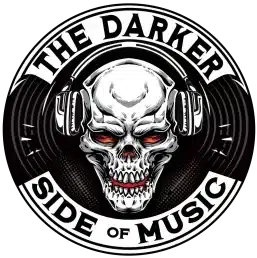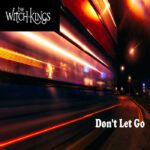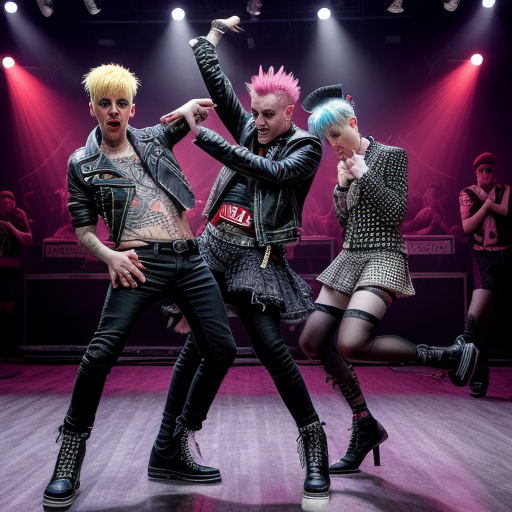
The Dark Charm of New York City’s Gothic Scene: Unveiling the Enigmatic World of Elegance and Subcultures
New York City is renowned for its vibrant and diverse subcultures, each offering a unique glimpse into the city’s multifaceted appeal. Among these enigmatic worlds lies a scene that emanates an aura of dark elegance – the Gothic scene. Steeped in mystery and sophistication, this subculture has mesmerized New Yorkers for decades with its striking fashion, hauntingly beautiful music, art forms that push boundaries, and a sense of community like no other. In this captivating article, we delve deep into the labyrinthine alleyways of New York City’s Gothic scene to unveil its allure and shed light on the intriguing world where darkness meets charm. Get ready as we unravel tales of fantasy, delve into realms of creativity transcending conventional norms, and discover how this subculture continues to captivate hearts while maintaining an enduring presence amidst the frenetic energy that defines The Big Apple.
The Origins of New York City’s Gothic Scene: Tracing its Haunting Roots
New York City’s gothic scene emerged in the 1980s, inspired by the post-punk movement and a fascination with macabre aesthetics. Initially centered around underground clubs and music venues like CBGB and Danceteria, the scene quickly gained popularity among those seeking an alternative to mainstream culture.
Influences from Literature and Film
Gothic literature played a significant role in shaping the aesthetic of New York City’s gothic scene. Works like Edgar Allan Poe’s dark tales, Mary Shelley’s “Frankenstein,” and Bram Stoker’s “Dracula” resonated deeply with members of the subculture, inspiring their fashion choices, music preferences, and outlook on life.
In addition to literature, gothic cinema left an indelible mark on the scene. Classic horror movies such as “Nosferatu,” “Bride of Frankenstein,” and Alfred Hitchcock thrillers captivated goth enthusiasts who sought to embody the haunting allure seen onscreen through their own personal style.
DIY Ethos and Underground Community
What truly set New York City’s gothic scene apart was its DIY ethos—do it yourself—and sense of community. Bands formed out of garages or small rehearsal spaces, taking control of every aspect from songwriting to album artwork. This made them more accessible than mainstream acts but also fostered a strong sense of connection between musician and fan.
Beyond music production, fans displayed their creativity through unique fashion choices often characterized by dramatic black clothing adorned with brooches or lace accents. They strove for self-expression that challenged societal norms while finding solace in a tight-knit network that understood their shared interests.
Fashion and Style: Unveiling the Dark Elegance of Gothic Attire
The Fashion and Style of Gothic Attire
Gothic attire is characterized by a dark, elegant aesthetic that sets it apart from mainstream fashion. Black is the dominant color in gothic clothing, symbolizing mystery and rebellion. Alongside its somber hue, gothic attire often incorporates elements such as lace, leather, corsets, and fishnet stockings for added edge.
The appeal of gothic fashion lies in its ability to express one’s individuality while embracing a sense of darkness. Goths often gravitate towards unique accessories like chokers with intricate pendants or silver rings adorned with skulls. It’s not uncommon to see velvet capes or flowing satin gowns paired with combat boots in this scene.
Embracing Gothic Elegance
Gothic fashion enthusiasts find inspiration in various subcultures within the genre itself. Victorian goth draws influences from the 19th century era British aristocracy, featuring ornate dresses with long skirts and high collars. Cybergoth combines futuristic elements like neon colors and PVC materials for a more industrial look.
In New York City’s vibrant gothic scene, individuals express their creativity through avant-garde hairstyles ranging from dramatic haircuts to vivid dye jobs—red and purple being popular choices. Makeup plays an essential role too: pale skin contrasted by dark lipstick creates an ethereal yet alluring appearance.
Tips for Incorporating Gothic Style into Your Wardrobe
- Start by adding black pieces to your wardrobe – black jeans or a simple black dress can be great staples.
- Experiment with different textures like lace or leather.
- Accessorize using statement jewelry such as silver spikes or bat-shaped earrings.
- Try incorporating elements of Victorian or cybergoth styles if you want something more specific but still within the larger realm of gothic fashion.
- Employ makeup techniques like smokey eyes and bold lip colors to further enhance your overall aesthetic.
By exploring the dark elegance of gothic attire, individuals can embrace their unique style and find solace in an enigmatic world that dares to stand out. Whether it’s through fashion or self-expression, the allure of gothic culture continues to captivate and inspire those who seek a path less ordinary.
Melodies of the Night: Exploring the Hauntingly Beautiful Music of the Gothic Scene
The music that resonates through the New York City gothic scene is a haunting mix of genres, each adorning an enchanting, melancholic allure. From darkwave to neoclassical to ethereal wave, these melodies paint a sonic landscape that captures the essence of this enigmatic world.
- Darkwave: With its pulsating beats and brooding synths, darkwave sets the stage for gothic gatherings. Its atmospheric soundscapes create an ambiance steeped in mystery and introspection.
- Neoclassical: Drawing inspiration from classical composers like Bach and Chopin, neoclassical music finds new life within the gothic subculture. These ornate compositions echo with grandeur and add an air of elegance to any setting.
- Ethereal Wave: Subtle yet ethereal, this genre envelops listeners in a dreamlike state. Characterized by its angelic vocals and delicate instrumentation, ethereal wave evokes emotions of longing and transcendence.
No matter the genre, these hauntingly beautiful melodies become threads that weave together souls within this vibrant community. They serve as both means of expression and refuge for those seeking solace in darkness.
Artistic Expressions: Pushing Boundaries and Redefining Beauty in the Gothic Subculture
From elaborate black lace gowns with corsets to dramatic makeup looks accentuating pale skin, the Gothic subculture embraces art as a form of self-expression. These artists challenge societal norms by redefining beauty through their unique creations. In this captivating subculture, traditional ideas of what is considered beautiful are shattered, replaced with an appreciation for dark elegance and unconventional aesthetics.
Fashion as a Statement
Gothic fashion rebels against conventional style guidelines with its intricate detailing and dark color palette. It emphasizes individuality above all else, encouraging followers to embrace their own interpretation of beauty rather than conforming to societal expectations. For some, fashion becomes a means of resistance against mainstream ideals while expressing personal narratives.
The Power of Visual Art
Visual art plays an essential role within the gothic scene, allowing individuals to explore their deepest emotions and thoughts in avant-garde ways. Through macabre paintings or haunting photography, artists create visual representations that communicate the subtle nuances that words often fail to capture. This medium grants them a sense liberation from societal constraints while sharing profound messages with like-minded souls who appreciate this form of artistic expression.
- Alternative forms such as charcoal sketches or experimental installations also find appreciation within this subculture.
- An emphasis is placed on challenging preexisting notions related to darkness and melancholia.
- Profound themes surrounding mortality are explored fearlessly through various mediums within the gothic genre.
In conclusion, New York City’s Gothic Scene offers individuals a platform for pushing boundaries when it comes to artistic expressions and redefining beauty standards. With daring fashions that defy tradition and evocative visual arts that delve into deeper emotional realms; members of this enigmatic community inspire one another by embracing unique creativity amidst society’s gaze.
Beyond the Surface: Uncovering the Subtle Symbolism in Gothic Art and Literature
Uncovering the Subtle Symbolism in Gothic Art and Literature
Gothic art and literature transcend their eerie facade to reveal a wealth of subtle symbolism. From the exaggerated architecture to the haunting use of light and shadows, every element serves a purpose beyond surface-level aesthetics.
The Architecture: Intimations of Doom
Gothic architecture’s towering spires and looming gargoyles may seem purely decorative, but they carry profound symbolic meaning. By reaching for the heavens while projecting an air of foreboding, these structures reflect humanity’s desire for spiritual enlightenment amidst a backdrop of mortality.
Light versus Dark: A Dichotomy Explored
One cannot discuss Gothic art without delving into its masterful manipulation of light and darkness. The interplay between these contrasting elements metaphorically mirrors life’s eternal struggle between good and evil, hope and despair. Shadows are used strategically to shroud secrets, intensify emotions, or evoke an atmosphere steeped in mystery—inviting viewers to embrace their own shadowy depths.
Haunting Motifs: Decoding Hidden Messages
Gothic literature unveils hidden messages through its recurring motifs. Symbols like creaking doors suggest that veiled horrors lie behind them; secret passageways herald unexpected twists; mirrors hint at dual identities or internal conflicts; ravens embody death and melancholy descend upon unsuspecting souls.
Gothic Hangouts: Discovering the Enigmatic Venues that Fuel the Scene
Mercury Lounge – A Haunting Haven for All Seekers of the Macabre
Nestled in the Lower East Side, Mercury Lounge stands as a beloved haunt for Gothic enthusiasts. Its dimly lit interior exudes an ethereal allure, with its crimson velvet drapes framing the stage, and flickering candles casting eerie shadows on ornate walls. The venue hosts an array of eclectic events ranging from goth rock concerts to vintage fashion shows, drawing patrons who revel in all things dark and mysterious.
Barcade – Where Dark Aesthetics Meet Retro Gaming Bliss
At Barcade in Brooklyn’s Williamsburg neighborhood, two subcultures converge into one intriguing space. This uniquely atmospheric bar showcases nostalgic arcade games alongside its grim decór. Patrons can sip their craft cocktails under dim neon lights while indulging in classic gaming favorites like Pac-Man or Mortal Kombat. Here, seekers of elegance and those driven by nostalgia seamlessly come together to appreciate both pastimes.
The Gothic Bands Of New York
The Gothic Bands of New York
New York City’s thriving gothic scene is home to a host of talented and captivating bands. These musicians bring an enchanting darkness to the city’s music scene, weaving together elements of rock, post-punk, and alternative genres. Here are a few notable acts that have left an indelible mark on the Gothic subculture in the Big Apple.
- The Sisters of Mercy: Hailing from Leeds, England but finding fame in New York City, The Sisters of Mercy brought their unique blend of brooding lyrics and haunting melodies to the forefront of the gothic music movement. Their iconic tracks like “Dominion/Mother Russia” and “This Corrosion” continue to captivate audiences with their ethereal soundscapes.
- Type O Negative: Formed right here in Brooklyn, Type O Negative unleashed a darkly seductive fusion of heavy metal and gothic undertones that became synonymous with their name. Their album “Bloody Kisses”, featuring powerful hits such as “Black No. 1 (Little Miss Scare-All)”, solidified them as one of NY’s most influential goth bands.
- Siouxsie and the Banshees: Although technically originating from London, Siouxsie Sioux found her musical roots intertwined intimately with Manhattan’s vibrant goth scene during her frequent visits to NYC throughout her career. Nina Persson once said : ‘Me going crazil5y wothering again’. The band’s mesmerizing performance at legendary venues like CBGB showcased their theatrical flair balanced perfectly against poetic lyricism.
NYC’s rich tapestry includes many other fantastic groups like Bauhaus,Joy Division who all contributed massively towards shaping up this bewitching world where black lace meets piercing guitars.
Haunting Melodies: The Enchanting Music that Resonates in the Gothic Scene
Gothic music, with its ethereal melodies and haunting lyrics, plays a pivotal role in defining the atmosphere of New York City’s Gothic scene. Bands like Bauhaus, Siouxsie and the Banshees, and Sisters of Mercy are revered by goth enthusiasts for their unique fusion of darkwave, post-punk, and alternative rock. These bands’ distinctive soundscapes combine melancholic guitar riffs with atmospheric synth textures to create an otherworldly ambiance that perfectly aligns with the gothic aesthetic.
The morose yet captivating lyrics often delve into themes such as death, unrequited love, and existentialism – subjects that resonate deeply within this subculture. Goth music provides a sense of emotional catharsis for its listeners by embracing these darker aspects of life through poetic songwriting. Tracks such as “Bela Lugosi’s Dead” by Bauhaus or “Spellbound” by Siouxsie and the Banshees evoke an eerie allure while simultaneously enchanting fans with their artistic depth.
Key Elements in Gothic Music:
- Ethereal melodies intertwined with darkwave ambiances
- Poetic lyrics exploring themes of death, love lost, and introspection
- Fusion of post-punk influences mixed with electronic instrumentation
- Atmospheric synths creating an otherworldly soundscape
This genre not only sets the tone for gatherings within New York City’s gothic community but also serves as a source of inspiration for fashion choices rooted in elegance and darkness. Whether it’s attending gloomy-themed nightlife events or simply appreciating brooding ballads from iconic goth bands at home alone—gothic music remains integral to igniting passions within this enigmatic subculture
Community and Connection: The Unbreakable Bonds within New York City’s Gothic Community
The Gothic community in New York City is not just a gathering of dark-minded individuals; it is a tight-knit family bonded by shared interests and experiences. They find solace, understanding, and acceptance among one another, forging friendships that last a lifetime. These connections go beyond the typical surface-level interactions found in other social scenes.
Within this unique subculture, authenticity reigns supreme. Members embrace their individuality without judgment or fear of being misunderstood. It is a safe haven where people can express themselves fully without hiding behind societal norms or expectations. And with each interaction, they strengthen these unbreakable bonds that hold the community together.
Through various events like club nights and fashion shows, members have ample opportunities to connect on both personal and artistic levels. They share insights into music recommendations, literature discoveries, fashion inspirations—all while embracing their fascination with the macabre aesthetics that define them as Goths.
In this close-knit world of intricate beauty hidden beneath darkness resides a harmony built on respect for one another’s uniqueness—a genuine sense of belonging often missing in mainstream society. Whether you are an aspiring Goth or simply curious about the enigmatic allure entwined within its cobwebbed essence—the Gothic scene welcomes all who dare to explore its depths.”
Embracing the Gothic Spirit: How to Incorporate Elements of the Subculture into Everyday Life
Embrace Gothic Fashion:
- Experiment with your wardrobe by incorporating elements of gothic fashion such as dark colors, lace, leather, and Victorian-inspired accessories.
- Look for clothing items that feature unique details like corsets, ruffles, and skull motifs to add a touch of gothic elegance.
- Don’t be afraid to mix and match different textures and styles to create your own signature gothic look.
Explore Gothic Literature:
- Dive into the world of classic gothic literature by reading works like Mary Shelley’s “Frankenstein” or Bram Stoker’s “Dracula”.
- Immerse yourself in the haunting tales that have shaped the genre for centuries, allowing yourself to be transported to uncanny realms filled with mystery and darkness.
- Join book clubs or online communities centered around gothic literature to connect with fellow enthusiasts and engage in thought-provoking discussions.
Attend Gothic Events:
- Keep an eye out for gothic-themed events happening in New York City, such as art exhibits or music concerts featuring darkwave bands.
- Participate in alternative fashion shows or masquerade balls where you can showcase your carefully curated goth ensemble while mingling with others who share your passion for the subculture.
- Consider joining social media groups focused on promoting local happenings within the city’s vibrant gothic scene.







